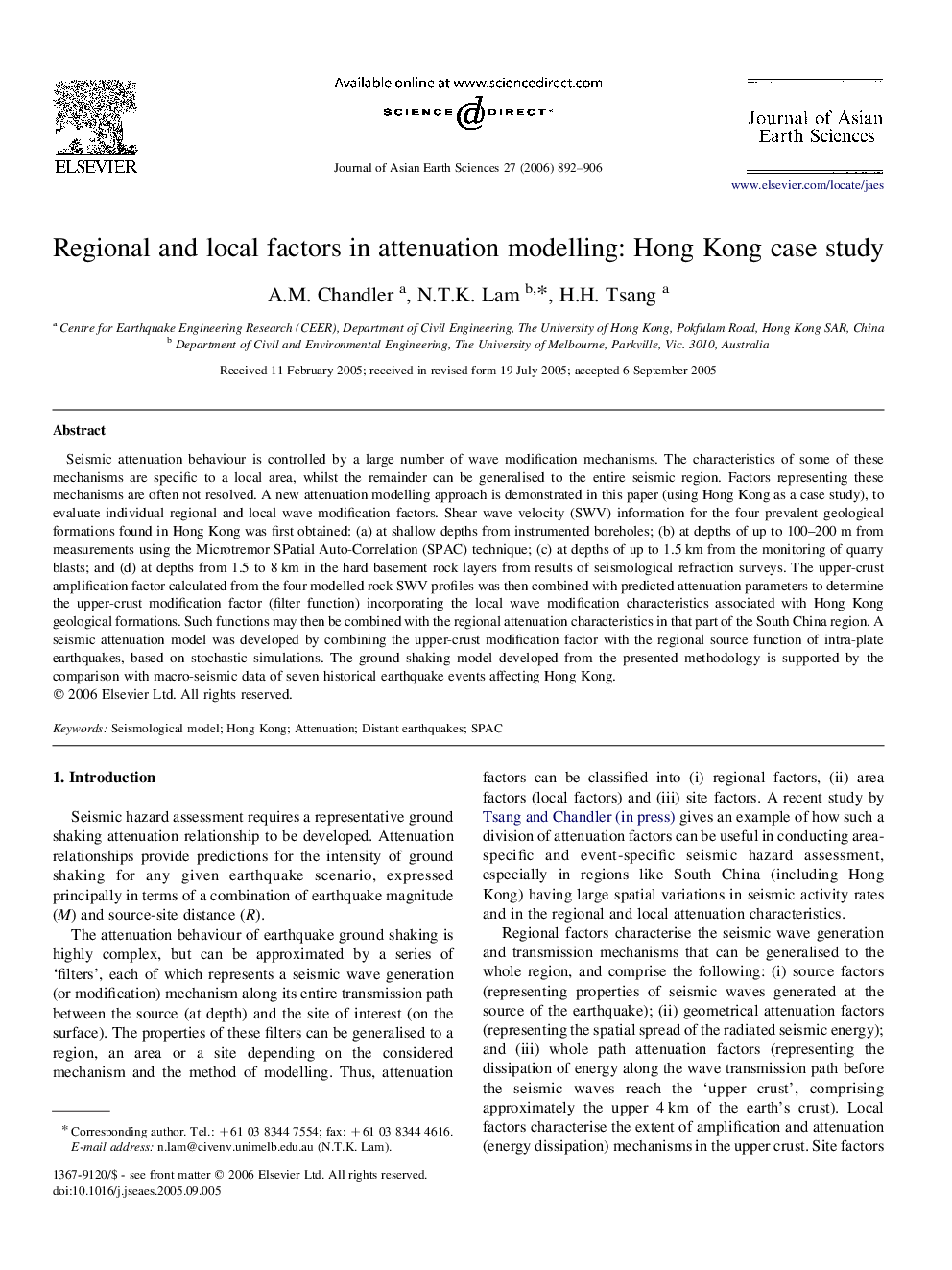| Article ID | Journal | Published Year | Pages | File Type |
|---|---|---|---|---|
| 4732862 | Journal of Asian Earth Sciences | 2006 | 15 Pages |
Seismic attenuation behaviour is controlled by a large number of wave modification mechanisms. The characteristics of some of these mechanisms are specific to a local area, whilst the remainder can be generalised to the entire seismic region. Factors representing these mechanisms are often not resolved. A new attenuation modelling approach is demonstrated in this paper (using Hong Kong as a case study), to evaluate individual regional and local wave modification factors. Shear wave velocity (SWV) information for the four prevalent geological formations found in Hong Kong was first obtained: (a) at shallow depths from instrumented boreholes; (b) at depths of up to 100–200 m from measurements using the Microtremor SPatial Auto-Correlation (SPAC) technique; (c) at depths of up to 1.5 km from the monitoring of quarry blasts; and (d) at depths from 1.5 to 8 km in the hard basement rock layers from results of seismological refraction surveys. The upper-crust amplification factor calculated from the four modelled rock SWV profiles was then combined with predicted attenuation parameters to determine the upper-crust modification factor (filter function) incorporating the local wave modification characteristics associated with Hong Kong geological formations. Such functions may then be combined with the regional attenuation characteristics in that part of the South China region. A seismic attenuation model was developed by combining the upper-crust modification factor with the regional source function of intra-plate earthquakes, based on stochastic simulations. The ground shaking model developed from the presented methodology is supported by the comparison with macro-seismic data of seven historical earthquake events affecting Hong Kong.
